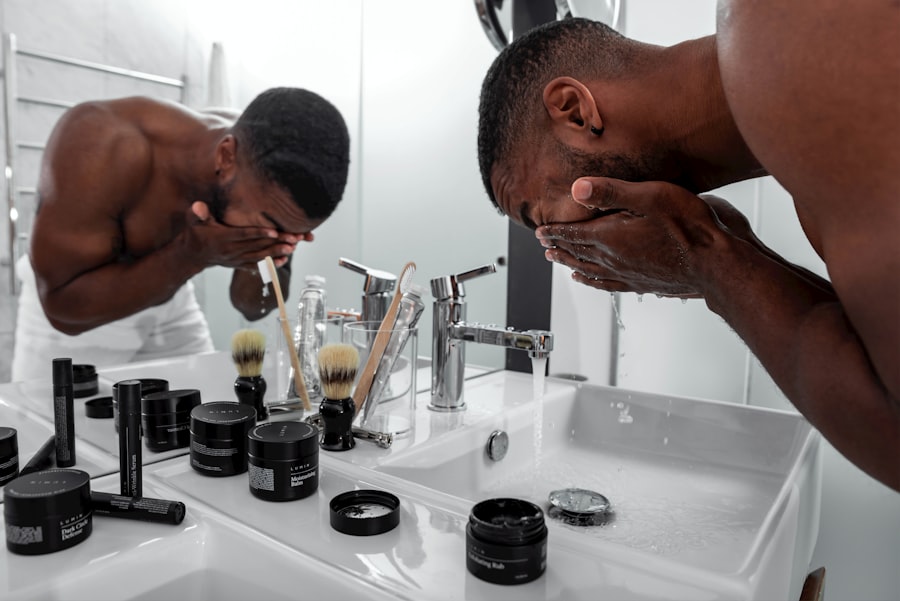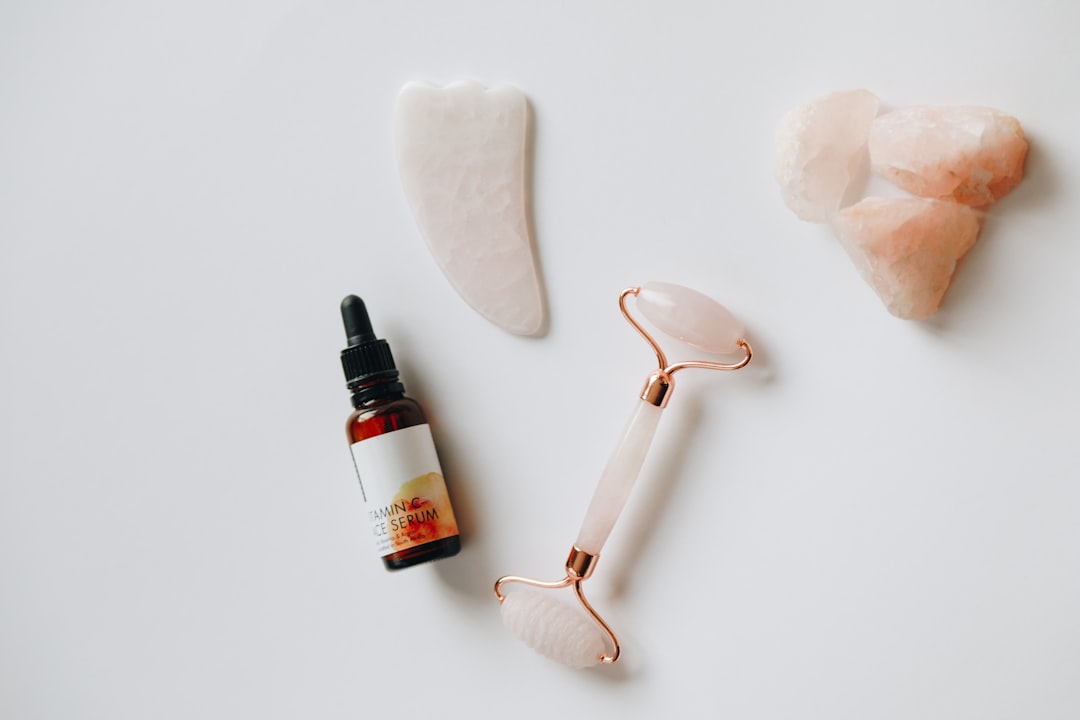Acne scars are the result of inflamed blemishes caused by skin pores engorged with excess oil, dead skin cells, and bacteria. When the pore swells, it causes a break in the follicle wall. Shallow lesions are usually minor and heal quickly. However, if there is a deep break in the wall of the pore, infected material can spill out into surrounding tissue, creating deeper lesions. The skin attempts to repair these lesions by forming new collagen fibers. These repairs usually aren’t as smooth and flawless as the original skin. Acne scars can take on many different forms, including rolling scars, boxcar scars, ice pick scars, and keloid scars. Each type of scar has its own unique characteristics and may require different treatments to effectively reduce their appearance.
Acne scars can have a significant impact on a person’s self-esteem and confidence. They can be a constant reminder of past struggles with acne and can make it difficult for individuals to feel comfortable in their own skin. Fortunately, there are several treatment options available to help reduce the appearance of acne scars and improve the overall texture and tone of the skin. From dermabrasion and microdermabrasion to chemical peels, laser therapy, dermal fillers, microneedling, and home remedies, there are various approaches to addressing acne scars. It’s important for individuals to consult with a dermatologist or skincare professional to determine the most suitable treatment for their specific type of acne scars.
Summary
- Acne scars are caused by inflammation and damage to the skin during the acne healing process.
- Dermabrasion and microdermabrasion treatments can help improve the appearance of acne scars by removing the top layer of skin.
- Chemical peels can help reduce the appearance of acne scars by removing damaged skin cells and promoting new skin growth.
- Laser therapy can target and reduce the appearance of acne scars by stimulating collagen production and resurfacing the skin.
- Dermal fillers can be used to fill in depressed acne scars and improve the overall texture of the skin.
- Microneedling can help improve the appearance of acne scars by stimulating collagen production and promoting skin regeneration.
- Home remedies and over-the-counter treatments such as vitamin C serums and retinoids can help improve the appearance of acne scars, but results may vary.
Dermabrasion and Microdermabrasion Treatments:
Dermabrasion is a surgical procedure that involves the removal of the top layers of skin using a high-speed rotating brush or diamond wheel. This process helps to smooth out irregularities in the skin’s surface, including acne scars. The procedure is typically performed under local anaesthesia and can take anywhere from a few minutes to an hour, depending on the size of the area being treated. Recovery time can vary, but patients can expect some redness and swelling for several days following the procedure.
Microdermabrasion is a less invasive procedure that uses a minimally abrasive instrument to gently sand the skin, removing the thicker, uneven outer layer. This process stimulates the production of new skin cells and collagen, resulting in smoother, more even-toned skin. Microdermabrasion is often used to improve the appearance of mild acne scars, as well as sun damage, age spots, and fine lines. The procedure is relatively quick and painless, with minimal downtime. Multiple sessions may be required to achieve the desired results.
Chemical Peels:
Chemical peels are another popular treatment option for reducing the appearance of acne scars. During a chemical peel, a chemical solution is applied to the skin, causing it to exfoliate and eventually peel off. This process stimulates the growth of new skin cells and collagen, resulting in smoother, more even-toned skin. There are different types of chemical peels available, ranging from superficial peels that target the outer layer of skin to deeper peels that penetrate into the middle layer of skin. The type of peel recommended will depend on the severity of the acne scars and the individual’s skin type.
Superficial peels are typically well-tolerated and require little to no downtime, making them a convenient option for individuals with busy lifestyles. Deeper peels may require more downtime and can cause temporary redness, swelling, and peeling. However, they can provide more dramatic results for individuals with moderate to severe acne scarring. It’s important for individuals to discuss their options with a skincare professional to determine the most suitable type of chemical peel for their specific needs.
Laser Therapy:
Laser therapy is a highly effective treatment for reducing the appearance of acne scars. There are several different types of laser treatments available, each targeting different aspects of scar tissue. Fractional laser therapy works by creating thousands of microscopic treatment zones in the skin, stimulating the production of new collagen and elastin. This process helps to smooth out acne scars and improve overall skin texture. Non-ablative lasers work by heating up the underlying skin tissue without damaging the outer layer, promoting collagen production and reducing the appearance of scars.
Ablative lasers, on the other hand, work by removing thin layers of skin to reveal smoother, more even-toned skin underneath. These lasers are often used to treat more severe acne scarring and can provide significant improvement in skin texture and tone. Laser therapy is a minimally invasive procedure that typically requires minimal downtime. However, multiple sessions may be necessary to achieve optimal results. It’s important for individuals to consult with a dermatologist or skincare professional to determine the most suitable type of laser therapy for their specific type of acne scars.
Dermal Fillers:
Dermal fillers are injectable substances that can be used to fill in depressed areas of the skin caused by acne scarring. These fillers work by adding volume to the skin, smoothing out wrinkles and fine lines, and improving overall skin texture. There are several different types of dermal fillers available, each with its own unique characteristics and benefits. Hyaluronic acid fillers are a popular choice for treating acne scars due to their ability to attract and retain moisture, resulting in plumper, more hydrated skin.
Calcium hydroxylapatite fillers are another option for individuals looking to improve the appearance of acne scars. These fillers work by stimulating the production of collagen, resulting in smoother, more supple skin. Poly-L-lactic acid fillers are also commonly used to treat acne scars, as they work by stimulating the body’s natural collagen production over time. Dermal filler treatments are minimally invasive and typically require little to no downtime. However, results are temporary and may need to be maintained with regular touch-up treatments.
Microneedling:

Microneedling is a minimally invasive procedure that involves using a device with fine needles to create tiny punctures in the top layer of the skin. This process stimulates the body’s natural wound healing response, promoting the production of new collagen and elastin. Over time, this can help to improve the appearance of acne scars and enhance overall skin texture and tone. Microneedling is a versatile treatment option that can be used on various areas of the body, including the face, neck, chest, and hands.
There are different types of microneedling devices available, ranging from manual rollers to automated pens. The depth of the needles can also vary depending on the specific needs of the individual. Microneedling is a relatively quick and painless procedure that typically requires minimal downtime. However, multiple sessions may be necessary to achieve optimal results. It’s important for individuals to consult with a skincare professional to determine the most suitable type of microneedling treatment for their specific type of acne scars.
Home Remedies and Over-the-Counter Treatments:
In addition to professional treatments, there are several home remedies and over-the-counter treatments that can help reduce the appearance of acne scars. Over-the-counter creams and gels containing ingredients such as retinoids, alpha hydroxy acids (AHAs), and beta hydroxy acids (BHAs) can help exfoliate the skin and promote cell turnover, resulting in smoother, more even-toned skin. These products can also help reduce inflammation and improve overall skin texture.
Natural remedies such as aloe vera gel, honey, and tea tree oil have also been shown to have beneficial effects on acne scars. Aloe vera gel has anti-inflammatory properties that can help reduce redness and swelling associated with acne scars. Honey has antibacterial properties that can help prevent infection and promote healing. Tea tree oil has antimicrobial properties that can help reduce inflammation and improve overall skin texture.
It’s important for individuals to use caution when using home remedies and over-the-counter treatments, as some ingredients may cause irritation or allergic reactions in certain individuals. It’s always best to consult with a dermatologist or skincare professional before trying any new treatments at home.
In conclusion, acne scars can have a significant impact on an individual’s self-esteem and confidence. Fortunately, there are several treatment options available to help reduce their appearance and improve overall skin texture and tone. From dermabrasion and microdermabrasion to chemical peels, laser therapy, dermal fillers, microneedling, home remedies, and over-the-counter treatments, there are various approaches to addressing acne scars. It’s important for individuals to consult with a dermatologist or skincare professional to determine the most suitable treatment for their specific type of acne scars. With the right approach and proper care, individuals can achieve smoother, more even-toned skin and regain their confidence and self-esteem.
Discover the best practices for treating and preventing blackheads in our related article, “Best Practices for Treating and Preventing Blackheads.” Learn how to effectively combat this common skin concern and achieve a clearer complexion. Whether you’re looking for sustainable skincare options or seeking anti-aging secrets, our website offers a wealth of information to help you achieve your skincare goals.
FAQs
What are the common causes of acne scars?
Acne scars are often caused by inflamed blemishes which occur when the pore becomes engorged with excess oil, dead skin cells, and bacteria. The pore swells, causing a break in the follicle wall. Shallow lesions are usually minor and heal quickly. But if there is a deep break in the wall of the pore, infected material can spill out into surrounding tissue, creating deeper lesions. The skin attempts to repair these lesions by forming new collagen fibers. These repairs usually aren’t as smooth and flawless as the original skin.
What are the 6 UK products to treat acne scars?
The 6 UK products to treat acne scars are:
1. La Roche-Posay Effaclar Duo (+)
2. The Ordinary Niacinamide 10% + Zinc 1%
3. Medik8 Crystal Retinal
4. Paula’s Choice Skin Perfecting 2% BHA Liquid Exfoliant
5. Murad InvisiScar Resurfacing Treatment
6. Dermalogica AGE Bright Spot Fader
How do these products work to treat acne scars?
These products work to treat acne scars by targeting the underlying causes of scarring, such as inflammation, excess oil production, and uneven skin texture. They may contain ingredients like niacinamide, retinol, salicylic acid, and vitamin C, which can help to reduce inflammation, promote collagen production, and improve skin texture.
Are these products suitable for all skin types?
It’s important to check the product labels and descriptions to ensure that they are suitable for your specific skin type. Some products may be more suitable for oily or acne-prone skin, while others may be formulated for sensitive or dry skin.
How long does it take to see results from these products?
The time it takes to see results from these products can vary depending on the individual and the severity of their acne scars. In general, it may take several weeks to months of consistent use to see noticeable improvements in the appearance of acne scars.
Are there any potential side effects of using these products?
Some potential side effects of using these products may include dryness, irritation, or increased sensitivity to the sun. It’s important to follow the usage instructions and start with a patch test to minimize the risk of adverse reactions. If you experience any severe or persistent side effects, it’s advisable to discontinue use and consult a dermatologist.




